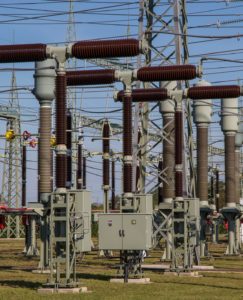Preparing for the crash: The threat of an electromagnetic pulse
The rapid development of North Korea’s nuclear program along with escalating tensions has forced leaders to acknowledge the threat of a potential nuclear strike. Although the risk of a nuclear strike or electromagnetic pulse (EMP) attack from North Korea is believed to be unlikely, because the overwhelming United States retaliation would likely devastate North Korean regime, tensions have placed a spotlight on the relative lack of preparation in the United States from the threat of an EMP.
The U.S Department of Energy described in its EMP Action Plan that EMPs consist of “intense pulses of electromagnetic energy resulting from solar-caused effects or man-made nuclear and pulse-power devices,” with the ability to inflict damage to electrical equipment. The report notes that the most probable, high magnitude threat is posed by a high-altitude EMP detonating between 30km and 400km above sea level.
Information and projections about the potential damage from an EMP are uncertain and contested. Some, such as Peter Pry, Chief of Staff of the former-Congressional EMP Commission, paint an apocalyptic image, arguing that a satellite or Intercontinental Ballistic Missile (ICBM) with an attached electromagnetic pulse detonated 300km above the ground could inflict massive damage to all 48 continental states. He states that the material impact of a detonation would disable the power grid for up to a year; that all aircraft electronic controls would be destroyed, meaning about 500,000 would die within minutes; within three days, the food supply in local stores would be spent and stored food would begin to spoil; and within seven days, nuclear power plants would melt down. He bases these projections on previous nuclear testing, and argues that current nuclear weapons that are orders of magnitude stronger would result in a much deadlier EMP. Others project significant damage in a more limited scope.
The Electric Power Research Institute (EPRI) estimates that electrical infrastructure damage is likely to be regional, affecting multiple states, but not the entire continental U.S. The Electric Infrastructure Security Council argued that “most power system components” would likely suffer minimal impacts, although some relatively unprotected-infrastructure such as digital relays are vulnerable. The lack of consensus about the threat itself can hinder effective planning, because the risks and necessary protections become unclear.

The 2017 GridEx IV, a biennial event to plan against threats to the North American power grid, simulated the threat of an EMP attack, especially from North Korea. The exercise involved “6,300 participants from 450 organizations” ranging from government agencies to utility companies to financial services firms.
Utilities have experience preparing for a similar threat from solar flares, where the sun expels large amounts of plasma and radiation, with the potential to cause geomagnetic storms that can damage power grids. To prepare for a potential solar flare, power companies have invested in spare supplies, and enclosed key pieces of physical infrastructure in Faraday enclosures which are “shields of conductive material used to protect electronic equipment and facilities.”
Participants in this exercise point out that current mitigation and resilience measures are likely to be insufficient or expensive; essentially arguing that the scale necessary to achieve power grid resilience is hard to achieve. Specifically, the damage to the grid is likely to have enormous cascading impacts onto other critical infrastructure sectors, and hardening measures such as placing transformers and substations into cages could cost billions for a state the size of New Jersey.
Further Reading and Sources:
- North Korean EMP Attack Would Cause Mass U.S. Starvation, Says Congressional Report – Forbes
- Can America’s Power Grid Survive an Electromagnetic Attack? – Bloomberg
- S. Department of Energy Electromagnetic Pulse Resilience Action Plan – U.S. Department of Energy
- CRITICAL INFRASTRUCTURE PROTECTION Electricity Suppliers Have Taken Actions to Address Electromagnetic Risks, and Additional Research Is Ongoing – US Government Accountability Office
- North Korea’s Missile tests: What you need to know – CNN
- As North Korea threatens electromagnetic pulse attack, questions over lapses in US grid security rise – Fox News
- North Korea’s Plenty Scary Without an Overhyped EMP Threat – Wired
